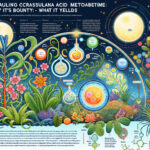Introduction to Crassulacean Acid Metabolism (CAM)
Have you ever wondered how certain unassuming succulents manage to survive and flourish in some of the harshest climates on Earth? Well, pull up a chair and prepare to be enlightened about one of nature’s most fascinating survival strategies! We’re talking about Crassulacean Acid Metabolism, commonly abbreviated as CAM. But what exactly does ‘crassulacean’ mean? Let’s dive in.
The term ‘crassulacean’ stems from the plant family Crassulaceae, which is known for its hardy members capable of enduring extended periods of drought. These botanical survivors have evolved an ingenious method to minimize water loss, while still performing the essential process of photosynthesis. This method is what we call CAM. Imagine a plant so efficient that it has reconfigured its entire photosynthetic apparatus to avoid opening its pores during the scorching daytime, thus conserving every precious droplet of water. This is the core of CAM’s brilliance.
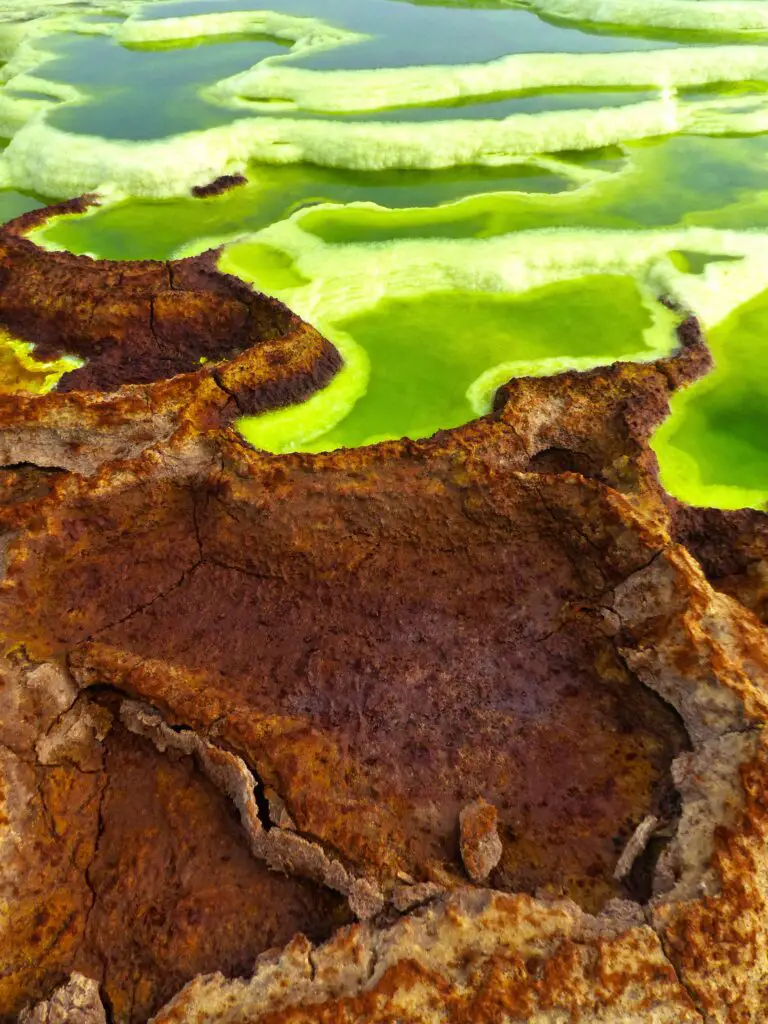
In a world where many of us are asleep during the night, these resilient plants come alive. When the cooler, more humid veil of darkness envelops their environment, CAM plants open their stomata—the tiny pores on their leaves—to take in carbon dioxide. But instead of using it right away, they store the CO2 in the form of malic acid, waiting patiently for the sun to rise. Come morning, with their stomata tightly sealed to prevent water loss, they convert the stored acid back into CO2 to be used in photosynthesis. Truly, a masterclass in adaptation!
Among the diverse variety of succulents employing CAM, the Crassula plant is a prime example. These plump-leaved beauties, while appearing to be just another pretty face in the succulent world, are actually the secret agents of water conservation. For a closer look at how these plants adapt to different environments, discover the thriving secrets of succulent cultivation and marvel at their ability to endure against all odds. It’s a detailed exploration into the world where succulents not only survive but thrive, offering insights into their resilience and beauty.
So next time you encounter a succulent, remember that beneath its calm and collected exterior lies a sophisticated mechanism rivaled by few. The CAM strategy is a compelling narrative of survival, a blend of botanical ingenuity and the relentless pursuit of life in the driest corners of our planet.
Evolutionary Background of CAM
Picture this: an arid landscape, a relentless sun, and amidst it all, plants thriving robustly. You might wonder, “How?” The answer lies within a remarkable survival strategy known as Crassulacean Acid Metabolism (CAM)—a unique photosynthetic adaptation evolved to conserve water in dry conditions. By opening their stomata at night when humidity is higher and temperatures are lower, CAM plants minimize water loss while securing carbon for growth. This night-shift operation represents an ingenious evolutionary turn, equipping these plants to tackle some serious environmental stress.
Let’s dig deeper and explore the role of CAM in carving a niche for plant species in the harshest of habitats. Succulent plants, including cacti and agaves, store the carbon dioxide they capture at night in the form of acids. Come daylight, they utilize this stored CO2 to photosynthesize and grow—while their neighbors wilt away under the scorching sun. This clever metabolic twist enables them not only to survive but to prosper where less adaptable flora can’t.
Envision a cactus in a desert, a lone victor in a sea of sand. It’s not just standing tall; it’s converting the challenges of its environment into opportunities. CAM is nature’s masterclass in resilience, turning limitations into life-sustaining systems. This method of moisture thriftiness has put species like the jade plant and the orchid cactus on the evolutionary fast track, turning arid arenas into their very own botanical bastions.
Dive into the vast panorama of evolution, and you’ll see CAM as a shining example of nature’s ingenuity. It’s a plant-world hack that snagged a winning ticket in the lottery of survival, especially in challenging conditions wrought by climate shifts. Understanding CAM’s evolutionary roots gives scientists valuable insights into how life adapts and persists against the odds.

The CAM Process: A Closer Look
Ever wondered how some plants manage to thrive in dry, arid environments? Meet the Crassulacean Acid Metabolism, or CAM process, a fascinating survival strategy certain plucky plants use. It’s a bit like the plant kingdom’s version of a camel’s hump, storing water for the long haul. Let’s dive into this biological process and see how some succulents, such as the steadfast aloe and adaptable agave, play the long game when it comes to photosynthesis.
Unlike their green brethren in lusher habitats, CAM plants play by different rules. During the scorching daytime, their stomata (tiny windows on leaves) batten down the hatches, keeping precious water from escaping. But when the night falls and temperatures drop, these same stomata swing open, gulping down carbon dioxide. This nocturnal CO2 is then converted into an acid and stored until Mr. Sun arrives. It’s a bit like saving leftovers for tomorrow’s lunch!
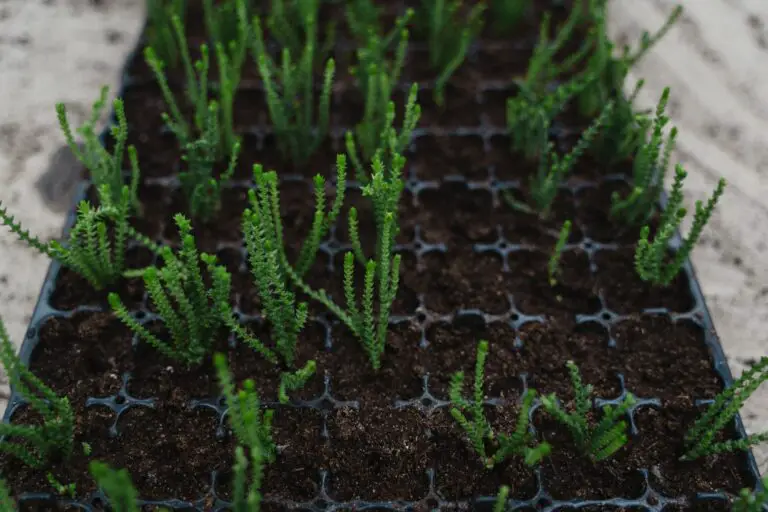
Now, you might be familiar with photosynthesis, the process where plants take sunlight, CO2, and water to create their food (glucose) and release oxygen. Well, CAM is photosynthesis with a twist. During the day, CAM plants break down the acid they made at night to release the CO2 they need, keeping their stomata closed to avoid water loss. It’s like a magical act where the plant prepares its food in the dark and enjoys it in the daylight without losing an ounce of water.
This isn’t the whole story, however. If you’re eager to see how a specific CAM plant has adapted its lifestyle to extreme conditions, have a look at this unusual succulent. It’s a testament to the remarkable versatility of these hardy species and their intricate survival tactics.
Comparing CAM to other photosynthetic adaptations, like those of C3 and C4 plants, is like comparing a hybrid car to standard gasoline vehicles. C3 plants, the most common type, use a direct method of photosynthesis but are less efficient in hot, dry conditions. C4 plants, on the other hand, have an extra step that helps minimize water loss and fix CO2 more efficiently under heat stress. CAM plants? They take the best of both worlds, conserving water meticulously without compromising on their photosynthetic duties.
Imagine if you could only shop for groceries at night and had to make it last all week. That’s the everyday reality for CAM plants. With this clever nocturnal strategy, they’ve turned a potential downfall into an incredible adaptation. It’s all about turning the limitations of their environment into an opportunity for growth – a true example of nature’s resilience.
Benefits of CAM in Water-Scarce Habitats
Picture this: a landscape parched under the blazing sun, where rain is as rare as a winning lottery ticket. It’s an environment that would spell doom for most, but not for the masters of moisture conservation – plants with Crassulacean Acid Metabolism (CAM). So, what does crassulacean mean in the life of these plants? It’s their secret ticket to survival.
Imagine the CAM process like a nocturnal bank for water savings. At night, when the air is cooler and less thirsty, CAM plants open their stomata – tiny mouth-like structures on their leaves – to collect carbon dioxide. It’s silently stored in the form of an acid, waiting for daylight to kick photosynthesis into high gear. As soon as the sun winks its first morning rays, the acid is broken down and, voilà, photosynthesis happens without the need for the stomata to open. This means virtually no water slips away during the hottest part of the day.

Take the plump and plushy succulents, for example. They’re not just Instagram-worthy because of their quirky shapes and colors – their fleshy leaves are like rain barrels, storing precious droplets. In habitats where every drop counts, CAM plants are the savvy savers, ensuring they thrive while others merely try to survive. These botanical wonders are to the plant world what camels are to the animal kingdom – icons of resilience.
And it’s not just about clinging to life; it’s about thriving with finesse. CAM plants often dominate their landscapes, serving as cornerstones of their ecosystems. By mastering the art of water conservation, these plants don’t just persist; they set the stage for a diversity of life that turns ecological adversity into a thriving tapestry of living organisms.
Diversity of CAM Plants
Ever marveled at the resilience of desert cacti or the thick-skinned charm of your windowsill succulents? These plants are not just beauties of nature; they’re survivalists, employing a spectacular process known as Crassulacean Acid Metabolism, or CAM. This isn’t just a party trick; it’s a sophisticated adaptation perfected over millennia.
Let’s take a stroll through the diverse world of CAM plants. We’re talking about a group that includes over 6% of all vascular plant species! Picture the majestic Saguaro cacti, arms raised to the sky, and the plump, vibrant succulents that add a pop of color to arid landscapes. They’re not only incredible to gaze upon but are also masters of water conservation.

These plants have hacked the system, opening their stomata at night to grab carbon dioxide when it’s cool, reducing water loss. When dawn breaks, the stomata close, and these sneaky night owls convert the stored CO2 into sugars. It’s like nature’s version of batch processing, and it has turned these plants into tough survivalists that thrive where others wouldn’t stand a chance.
If you’re thinking that CAM is a one-size-fits-all strategy, think again. There’s a staggering variety within this group, ranging from the orchids clinging to tree trunks in tropical forests to the pineapple, sweetly biding its time in your fruit basket. Dive deeper into the ingenious world of CAM photosynthesis and discover how this survival strategy plays out across different species and conditions.
From the bone-dry deserts to the rocky crags of mountain peaks, CAM plants dot the globe, flaunting their ability to survive in the face of adversity. These plants aren’t just survivors; they’re a testament to the innovation of evolution, and their existence whispers the secrets of adaptation and endurance — lessons we can all learn a thing or two from.
The Daily Life of a CAM Plant
Imagine a world where moisture is scarce, and the sun beats down with unforgiving heat. In these harsh conditions, CAM plants have perfected the art of survival. What’s their strategy, you ask? It’s all in their remarkable daily routine; a 24-hour cycle fine-tuned over the eons to maximize efficiency and minimize water loss. So, let’s dive into a day in the life of these amazing plants, and uncover what crassulacean really means when it comes to plant adaptation.
Night Moves: Stomata Open, Carbon Dioxide Enters
As dusk falls, CAM plants begin their nocturnal symphony. They open their stomata, small mouth-like openings on their leaves, to take in carbon dioxide. This is a departure from the modus operandi of their botanical peers, who prefer the sunlight hours for this task. But for CAM plants, doing so under the cloak of night has its perks—it conserves precious water by taking advantage of the cooler, more humid nighttime air. The carbon dioxide is then converted into an organic acid and stored until the sun rises again, getting them prepped for the day ahead.
Daytime Dynamics: Stomata Close, Sunlight Powers Photosynthesis
With the first light of day, CAM plants switch gears. Their stomata close tight, trapping moisture inside. Now, you might wonder, how do they conduct photosynthesis with no fresh carbon dioxide coming in? The answer lies in the organic acid they produced at night, which now releases the stored carbon dioxide. It’s a brilliant adaptation, allowing for daytime photosynthesis with a closed-circuit system that conserves water—an absolute game changer in arid environments.
In the sunlight, CAM plants are like solar panels, turning light into life while keeping a watertight seal against the day’s heat. Unlike other plants that wilt under the midday sun, CAM plants thrive, their chemical processes purring along in their succulent leaves or stems. It’s this unique day and night routine that sets CAM plants apart in the plant kingdom, making them a pinnacle of evolution’s answer to extreme survival.
Other plants might pump out oxygen all day long, but CAM plants work the night shift, contributing to our oxygen supply as they breathe in the cool night air. They’re the unsung heroes of the plant world, quietly carrying on their vital processes while the rest of the world sleeps.
Now for a little real-life example, let’s consider the jade plant, a common houseplant and a member of the Crassulaceae family, from which crassulacean gets its name. It sits on your windowsill, unbothered by the dry indoor air, storing carbon dioxide at night and photosynthesizing during the day without missing a beat. It’s a small-scale reflection of the magnificent survival strategies employed by CAM plants in the wild.
Want a closer look at how this all works? Check out this video that demystifies the process and contrasts CAM plants with their C3 and C4 cousins:
Understanding the daily life of a CAM plant is not just academic; it’s a narrative of ingenuity and resilience. These plants make use of every hour, every drop of water, and every ray of sun to not just survive but to thrive under conditions that would spell doom for others. The term crassulacean encapsulates this incredible adaptability, a testament to the diversity and tenacity of life on Earth.
Human Uses and Benefits of CAM Plants
Once upon a time, our ancestors stumbled upon the robust and resilient vegetation we now identify as CAM plants. These botanical wonders have woven their way into diverse sectors of human life, intertwining with our needs and luxuries. Let’s take a stroll through the captivating world of CAM, or crassulacean acid metabolism, plants and discover how they’ve become irreplaceable in our lives.
Dive into the culinary arena, and you’ll find CAM species serving up a smorgasbord of delights. Take, for example, the humble pineapple, a CAM plant that tickles taste buds across the globe. Its juicy sweetness is not just a treat to our palate; it also represents a masterclass in water-use efficiency, thriving in conditions where other crops would simply wither. Or consider the prickly pear, whose fruit and pads are staple foods in many cultures, cherished for both their taste and tenacity.

It’s not all about the belly, though. CAM plants are a hot commodity in the horticultural world as well. They come in an array of shapes and sizes, from the stark, spiraling majesty of agaves to the plush, colorful mounds of sedum. These plants not only add a dash of charm to our living spaces but also serve as hardy, low-maintenance friends in our gardens. With an uncanny ability to withstand drought, they are the go-to choice for eco-friendly and water-wise landscaping.
Beyond their aesthetic appeal and gustatory gifts, CAM plants play a pivotal role in traditional medicine across various cultures. For centuries, the aloe vera has been revered as a natural healer, its gel lauded for its soothing and regenerative properties—a first aid kit ingeniously encased within succulent leaves. Similarly, the agave’s sap has been tapped not only to distill spirits like tequila but also as a medicinal syrup with a wealth of health benefits.
Whether gracing our plates, homes, or gardens, CAM plants exhibit a remarkable capacity to make the most of minimal moisture, leading by example in an age where sustainability is not just appreciated but essential. They remind us that in aridity lies opportunity—a lesson in resilience worth remembering.
Conservation and Future Outlook
Imagine a world where plants could outsmart the scorching sun, a realm where succulents like the jade plant and the agave not only survive but thrive in brutally arid environments. These are the champions of the plant kingdom—employing crassulacean methodologies to stand resilient against the test of climate extremes. In this chapter, let’s take a deep dive into why conserving these Crassulacean Acid Metabolism (CAM) plants is not just important, it’s imperative for the future of our planet.
The Necessity of CAM Plant Conservation
These hardy survivors have a remarkable knack for water conservation, storing it in their thick, fleshy leaves, which practically makes them living reservoirs! With climate change turning up the heat and making water an even more precious resource, CAM plants could be the key to unlocking a new wave of drought-resistant crops. The role they play in their native ecosystems is irreplaceable, like pieces in an intricate puzzle. Without them, we risk disturbing the balance, leading to cascading effects we may not be able to foresee or control.
Take, for instance, the agave plant, not only a staple in desert ecosystems but also the foundation of industries—tequila, anyone? The economic ramifications of losing such species are staggering, with livelihoods hanging in the balance. But it’s not just about the financial loss; it’s about preserving a lineage that dates back millions of years, a lineage that has so much to teach us about resilience and adaptation.
Bracing for the Future Amidst Climate Change
The plot thickens as we gaze into the future where climate anomalies become the new normal. As global temperatures inexorably climb, we find ourselves at a crossroads. Do we take the passive route and witness these biological miracles wilt, or do we rally to protect and learn from them? CAM plants could be the teachable moment for humanity—a lesson in survival against the odds. Research initiatives aimed at uncovering the secrets locked within their genetic code could very well be the blueprint for sustainable agriculture in a warmer world.
Just picture the majestic Saguaro Cactus—towering, resilient, a sentry in the Sonoran desert. Its very presence challenges the status quo, beckoning us to question and explore. How many Saguaro-like survival strategies are nestled within the DNA of CAM plants? The potential is vast; the implications, profound. From creating innovative water-saving techniques to engineering crops that can feed our growing population without guzzling our planet’s limited water supply—these plants hold promises yet to unearth.
Let’s not let this opportunity slip through our fingers like dry sand. The conserving of CAM plants is not only a nod to their impressive past but an investment in our collective future. As Sir David Attenborough brings to light in ‘The Evidence Effect,’ conservation isn’t just about preserving what we have; it’s about fostering a revolution, a paradigm shift towards biodiversity that ensures survival under a changing climate. With each CAM plant conserved, we take a step closer to this reality.
Conclusion
In our journey to demystify the essence of crassulacean acid metabolism, we’ve seen how this unique adaptation has turned the tables in the plant kingdom. At a time when most of us are fast asleep, these plants spring into action, opening their stomata under the cloak of night to capture carbon dioxide. It’s like a midnight snack run that fuels them during the scorching daylight hours when their peers are out battling the sun.
The significance of this nocturnal soiree lies in its ingenious conservation of water. Imagine you’re out in the desert—every drop you can save is a treasure. That’s the daily life for plants equipped with crassulacean acid metabolism. By shifting their CO2 uptake to a cooler time, they minimize evaporation, keeping moisture locked in like a state-of-the-art hydration system. This life-hack not only ensures their survival but also makes them exemplary water-wise warriors in the battle against arid climate challenges.
But why should we care about these silent, stoic survivors? The answer lies in their potential to inspire. In a world where resources are dwindling, learning how to maximize efficiency and minimize waste is crucial. These plants are not just surviving; they’re thriving by adapting to their environment in extraordinary ways. Researchers are now looking at crassulacean acid metabolism as a blueprint for crop innovation. Imagine if our future food sources could sip water rather than guzzle it down, ensuring food security in increasingly unpredictable climates.
With crassulacean acid metabolism, plants are showing us that the secret to survival is not just about facing challenges head-on but about turning them into opportunities for growth and resilience. It’s a powerful reminder that sometimes, the best way to move forward is by taking a step back, recalibrating, and embracing a rhythm that goes against the grain.
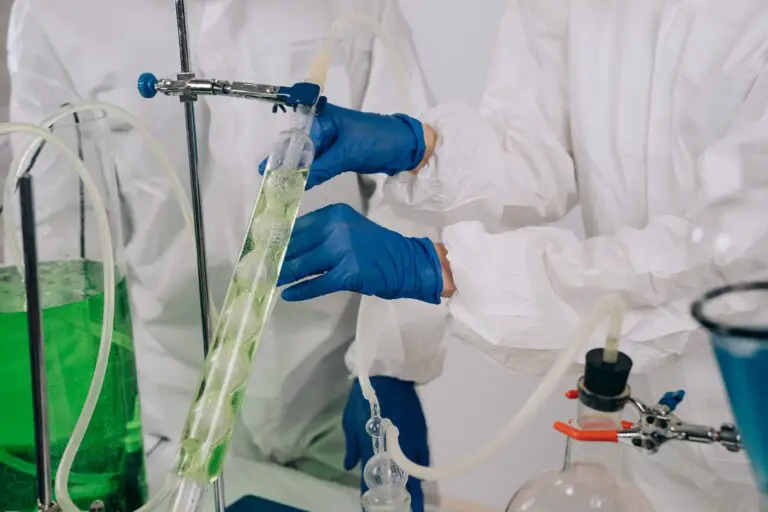
In essence, the plants that have mastered the art of crassulacean acid metabolism are not just surviving—they are thriving. They stand as a testament to the power of adaptation and the endless potential for innovation in our natural world. As we stride into an uncertain future, let’s take a leaf out of their book and strive to be just as resourceful and resilient.
Frequently Asked Questions
Delve with us into the verdant world of Crassulacean Acid Metabolism (CAM) plants, where it’s all about turning survival tactics into living art. These botanical survivors display remarkable adaptability, and here, we’re answering the queries that budding minds might have.
Unearthing the CAM Advantage
What is the main advantage of CAM for plants, you ask? Imagine being a plant in a parched desert, where every drop of water is as precious as gold. CAM is like the plant’s secret bank vault, storing carbon dioxide at night to use for photosynthesis during the day, minimizing water loss and hitting the jackpot in water conservation. It’s like having the ability to eat your cake and have it, too.
This nighttime strategy doesn’t just allow CAM plants to thrive in arid conditions; it puts them in the perfect position to outcompete other plants that haven’t mastered this nighttime hustle. It’s the botanical equivalent of running a business 24/7 with the lights off to save on bills.
The CAM Conundrum: Beyond Arid Limits
Can CAM plants survive in non-arid environments? Absolutely! It’s like having a survival kit ready, even when you’re just going for an afternoon hike. CAM plants can flex their metabolic muscles to suit their surroundings. In non-arid conditions, they can switch off their water-saving mode and play the field like any other green leafy plant out there. This versatility is the magic behind their global portfolio of habitats.
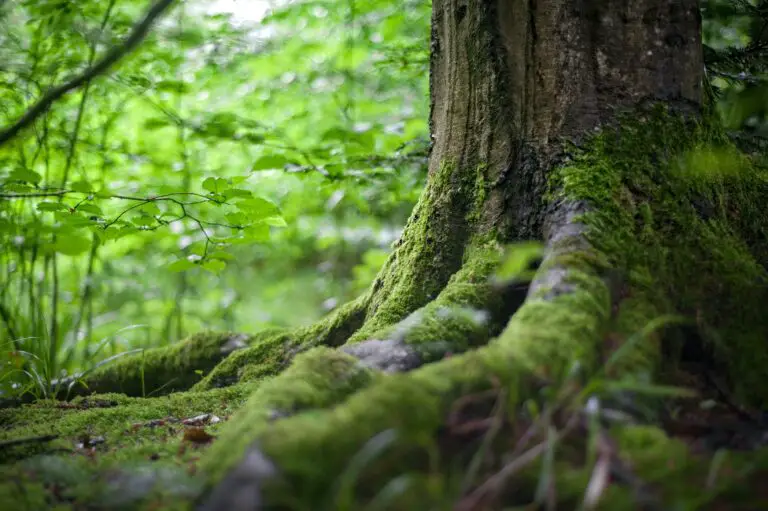
In the grand theatre of evolution, CAM plants have proven to be the ultimate improvisers—adapting their performance to meet the climate conditions of the stage they find themselves on. Whether in a tropical rainforest or a harsh desert, these plants dance to the tune of survival, with CAM as their master choreographer. Stay rooted as we continue to unearth the secrets and intricacies of these remarkable plants.
